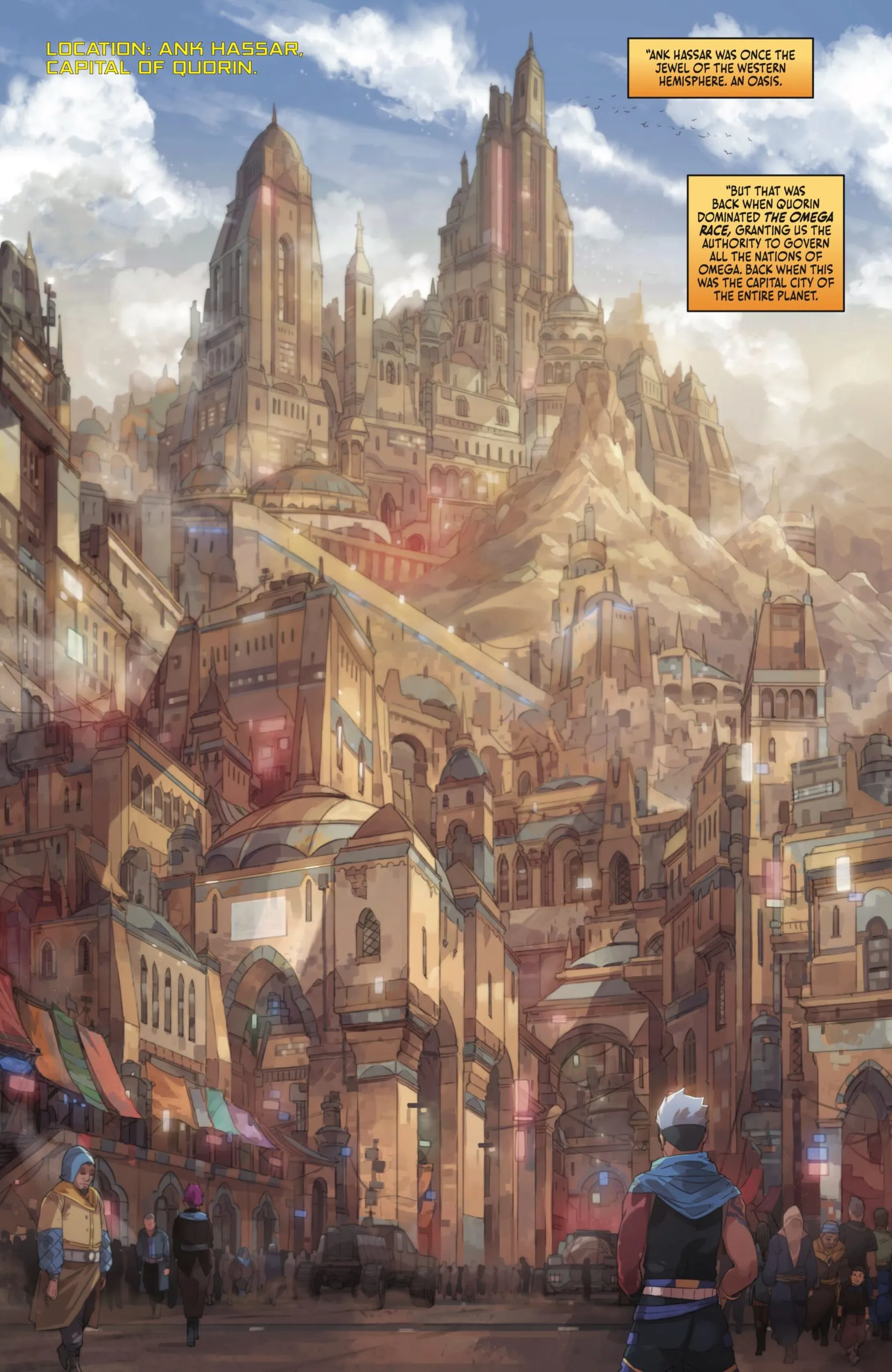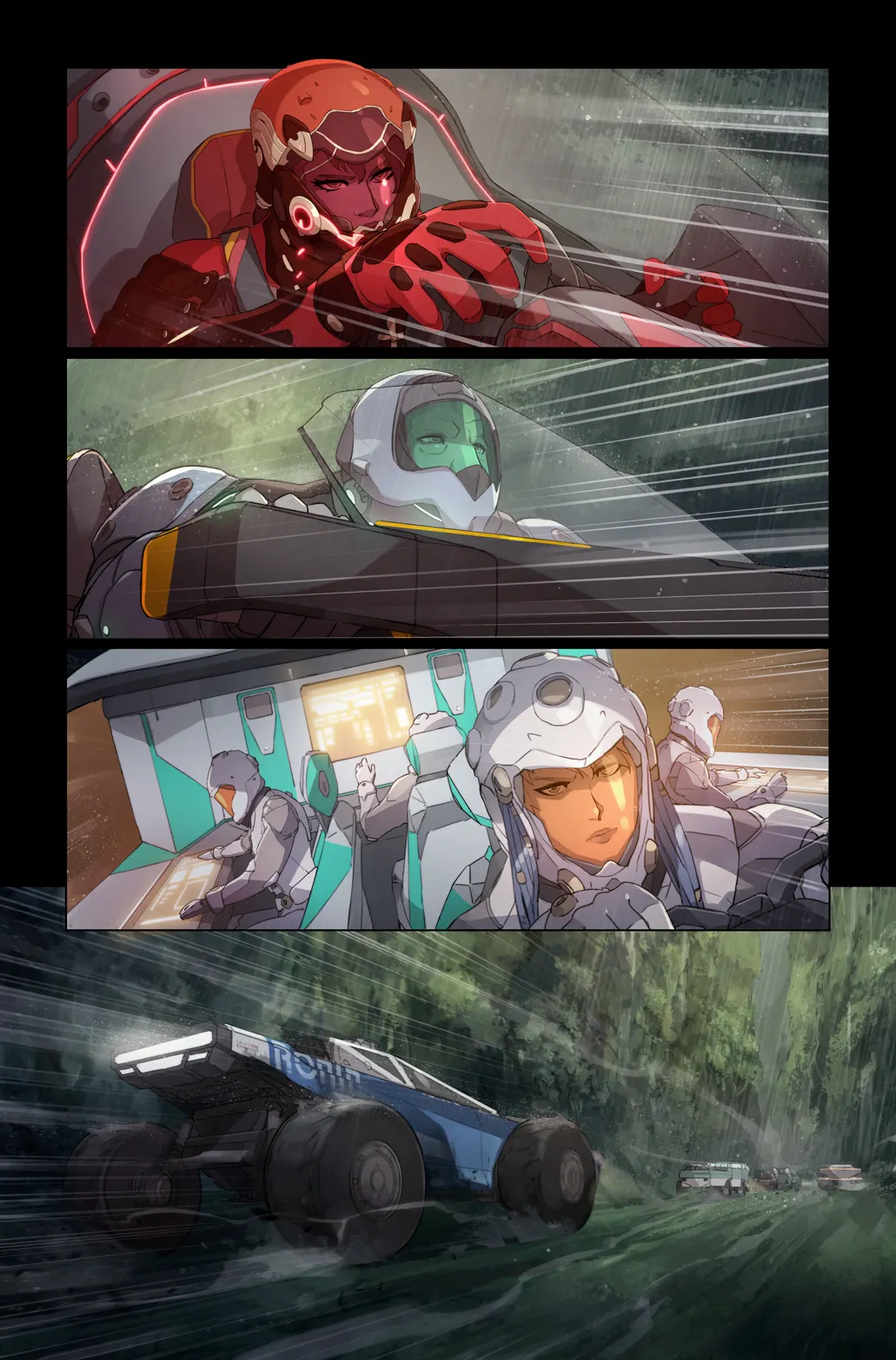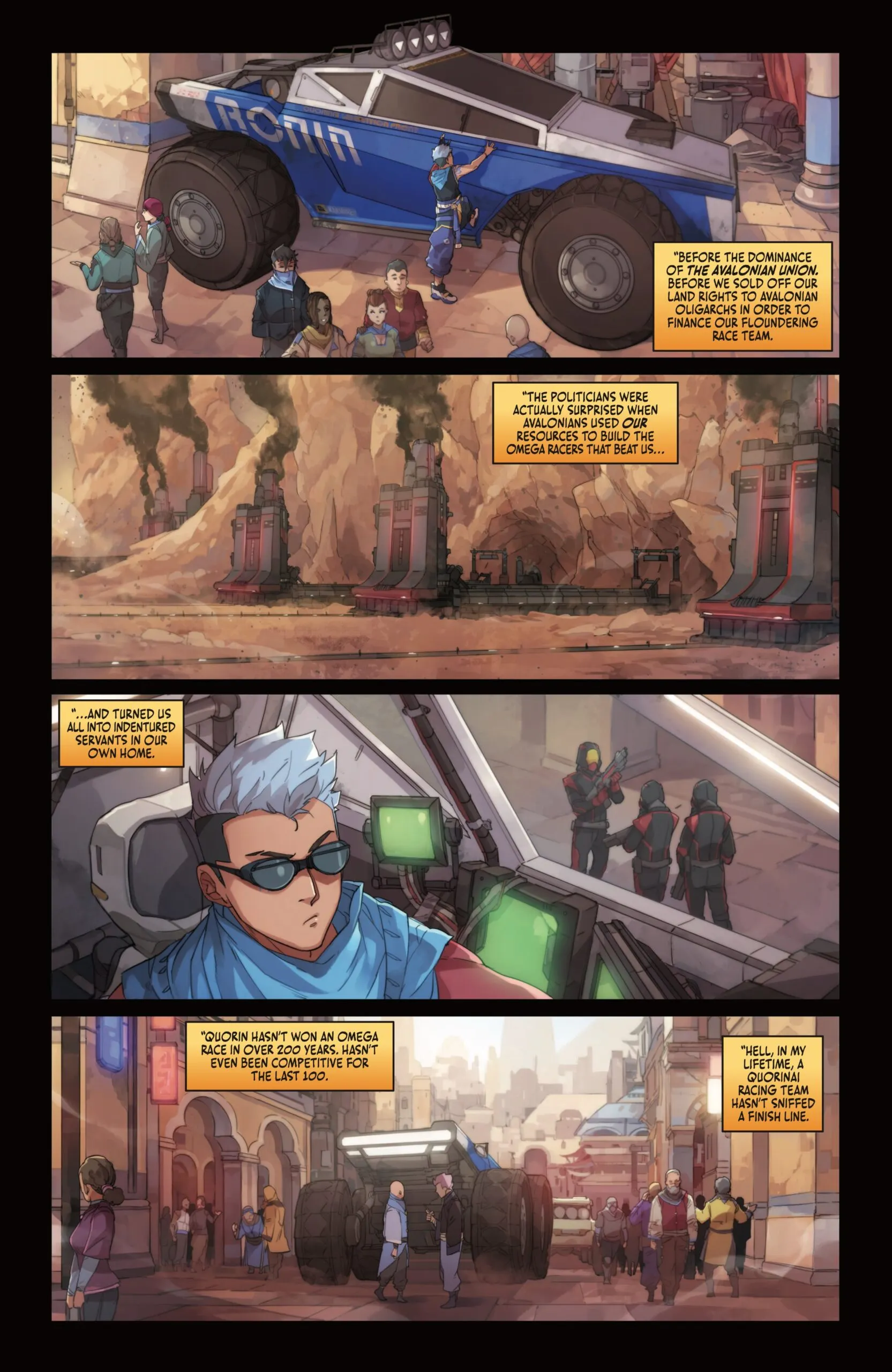On the planet Omega, speed is power, and whoever wins its racing competition rules the world.
That’s the premise behind the Web3 multimedia sci-fi project Runner, co-created with Metaversal by Bryan Unkeless, Cedric Nicolas-Troyan, Bryce Anderson, and Blaise Hemingway.
Runner will exist as a comic book, an NFT profile picture (PFP) project, possibly a video game, and eventually a TV show under Unkeless’ production company Clubhouse Pictures. Unkeless, Hemingway, and Anderson spoke with Decrypt about building the world of Runner in Web3.
“While our central story is focusing on a few characters, it was a natural extension to look at PFPs as a way to really start creating specific identities within our world,” Unkeless said of creating NFTs.
But Runner isn’t your typical NFT project, with pseudonymous founders and overly ambitious roadmaps. The creators of Runner are experienced Hollywood creatives putting their names on the line.
At the end of the day, they’re looking to disrupt what it means to tell a story in the internet age.

Having co-produced the “Hunger Games” movies as well as “Bright,” “Birds of Prey,” and “I, Tonya,” Unkeless is enthusiastic about Web3’s potential to change the entertainment industry. Runner’s characters, not unlike many in the Web3 space, are looking to push up against “established power structures.”
Hemingway has worked in Hollywood as a screenwriter on a number of films like “Playmobil: The Movie,” “Clifford The Big Red Dog,” and the upcoming movie adaptation of the Settlers of Catan board game.
When it came to developing Runner’s unique and high-concept sci-fi world, it truly was a collaborative effort.
“Cedric had this idea that these cars [in Runner] could also kind of open up and move through wormholes in the course of a race,” Hemingway said.

As the project’s writer, Hemingway believes a story all about racing vehicles has to have higher, sustained stakes—hence the Omega race winner being crowned emperor of the world.
From a thematic standpoint, Runner evokes elements of futurism—the Italian art movement that spread the belief that speed and technology were everything. Futurism’s radical rejection of historic power structures and passion for reinvention also aligns with Web3 philosophy as a whole.
“In Web3, we’re able to be pretty nimble,” Hemingway said, adding that building a project without the traditional entertainment industry’s ruleset allows Runner’s founders to adapt quickly to community feedback.
While he also comes from Hollywood, Anderson has been an active participant in the Web3 and NFT spaces, having minted multiple Bored Ape Yacht Club NFTs in May 2021.
“We knew we wanted to create a world where 10,000 stories could be told,” Anderson said of the project. “We saw the comic book as a way to help guide people into the story […] and then use that story as a basis myth for everyone in the community to latch onto.”

Now that Runner’s founders have immersed themselves in the Web3 and NFT communities, Unkeless believes it’s a stronger project because the team is starting with its story, not its art.
“The challenge, frankly, from a lot of Web3 projects is they have unbelievable visuals, and they even have great world-building, but they don’t necessarily yet have the overarching concept and construct that lends itself to different mediums,” Unkeless said. “What we hope is that we have enough knowledge and experience from film and television and gaming that we know what works there.”
As the Runner team members work to build out its story and high-speed universe, they already have some competition. Twitch co-founder Kevin Lin’s Metatheory raised $24 million to further develop its sci-fi franchise, Duskbreakers, which exists as an Ethereum PFP NFT collection and has plans for a comic book and a video game.
While NFTs are a central component to the Runner project, its team isn’t so sure Hollywood is ready to adopt the new technology despite some independent producers leaning into the tech.
“Is the film industry ready to embrace NFTs? No, they are not. Many corners won't even embrace streaming, superheroes, or digital cameras,” Anderson wrote. “But anything that works for the audience will eventually work for Hollywood.”





